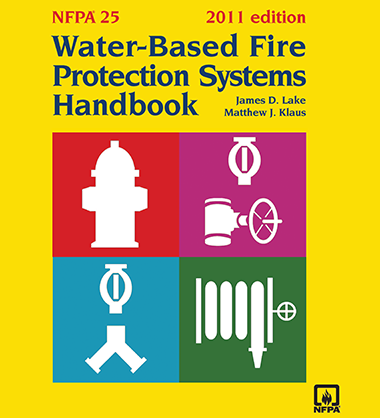Nfpa 13 Automatic Sprinkler Systems Handbook Pdf

Creeper world 3 farbor guide. NFPA 13 Automatic Sprinkler Systems Handbook 2016 NFPA 13 Handbook helps you implement the new industry standard. Current with the 2016 and the latest sprinkler technology, also the Handbook helps you apply scientifically-based solutions that reduce risks and fire loss.
NFPA 13: Standard for the Installation of Sprinkler Systems advances how sprinkler system designers, installers, maintainers, and AHJs can safeguard people and property against fire. Improve automatic fire sprinkler effectiveness and avoid errors using the new research-based 2016 edition of NFPA 13: Installation of Sprinkler Systems.
Written by the foremost experts in fire sprinkler engineering, fire testing, and applications, this full-color resource is packed with expertise, color visuals, and information that prepares you to conduct accurate and efficient system design, installation, and also testing. Steer clear of issues that could compromise sprinkler operation with NFPA’s 2016 Automatic Sprinkler Systems Handbook. Here’s how the NFPA 13 Automatic Sprinkler Systems Handbook 2016 assists designers, engineers, contractors, and installers on the job: • Complete 2016 NFPA 13 text brings you up-to-code with the latest research-based requirements for system design, installation, also acceptance testing. • Exclusive commentary explaining the intent behind provisions is written by leading industry experts, including Wes Baker, Tracey Bellamy, Bob Caputo, John Denhardt, John Deutsch, Jim Biggins, Roland Huggins, and Pete Schwab.  • Hundreds of full-color photos, graphics, and also detailed illustrations clarify concepts.
• Hundreds of full-color photos, graphics, and also detailed illustrations clarify concepts.
Nfpa 13 Sprinkler Requirements Codes
• New artwork provides a detailed look at the starting and stopping points of several NFPA systems including underground mains (NFPA 24) storage tanks (NFPA 22), fixed water spray systems (NFPA 15),, fire sprinklers (NFPA 13), and also. • Expanded checklists and also worksheets include a new plans review feature from the AHJ perspective written by David Lowrey.
• NFPA 13 Lessons at the back of some chapters include new storage lessons by James Golinveaux, and hanging and bracing lessons by John Deutsch. • Project workflow diagrams and also flowcharts illustrate the progress of a sprinkler project step-by-step.
• Decision trees on protection for storage shows users how to choose the right sprinkler strategy for any facility. • Supplements address the European Experience wtih Fire Sprinklers; an overview of technical changes from the 2013 and 2016 editions of NFPA 13; the Evolution of Storage Sprinkler Standards; and also Step-by-Step Hydraulic Calculations for a Fire Sprinkler System. New design features improve navigation and make information more accessible. • Ask the AHJ FAQs help installers avoid common errors. • Designer’s Corner features take a deep dive into design topics. • Updated line art improves your understanding of connections. • Historical Note feature reviews some of the background behind material in the handbook.
• Research Note feature spotlights material based on research in the field. • Closer Look feature provides further information on specific subjects or issues. • FPRF Spotlight covers research by the Fire Protection Research Foundation directly impacting NFPA 13 code changes for 2016.
Attention, Internet Explorer User Announcement: Jive has discontinued support for Internet Explorer 7 and below. In order to provide the best platform for continued innovation, Jive no longer supports Internet Explorer 7. Jive will not function with this version of Internet Explorer. Please consider upgrading to a more recent version of Internet Explorer, or trying another browser such as Firefox, Safari, or Google Chrome.
(Please remember to honor your company's IT policies before installing new software!) • • • •.
This standard provides a range of sprinkler system approaches, design development alternatives, and component options that are all acceptable. Building owners and their designated representatives are advised to carefully evaluate proposed selections for appropriateness and preference. This standard shall provide the minimum requirements for the design and installation of automatic fire sprinkler systems and exposure protection sprinkler systems covered within this standard. This standard shall not provide requirements for the design or installation of water mist fire protection systems, which are not considered fire sprinkler systems and are addressed by NFPA 750. This standard is written with the assumption that the sprinkler system shall be designed to protect against a single fire originating within the building. This standard also provides guidance for the installation of systems for exterior protection and specific hazards. Where these systems are installed, they are also designed for protection of a fire from a single ignition source.
Purpose Since its inception, this document has been developed on the basis of standardized materials, devices, and design practices. However, Section 1.2 and other subsections such as 6.3.7.8 and 8.4.8 allow the use of materials and devices not specifically designated by this standard, provided such use is within parameters established by a listing organization. In using such materials or devices, it is important that all conditions, requirements, and limitations of the listing be fully understood and accepted and that the installation be in complete accord with such listing requirements. The purpose of this standard shall be to provide a reasonable degree of protection for life and property from fire through standardization of design, installation, and testing requirements for sprinkler systems, including private fire service mains, based on sound engineering principles, test data, and field experience. Update to the 2013 NFPA 13 for more design options and greater usability: Modified Chapter 16 and Chapter 17 combine in-rack and ceiling sprinkler requirements in the same section to streamline referencing and help you maximize your time.
New Chapter 21 on alternative storage approaches facilitates use of performance-based design -- especially for sprinkler systems designed around a specific commodity or storage arrangement. New requirements concerning nonmetallic piping help contractors, owners, and manufacturers recognize and address material compatibility issues, before oversights occur. New provisions allowing the backflow preventer to serve as a system control valve Updated requirements for elevators The latest coverage on antifreeze, heat tracing and heat loss calculations.